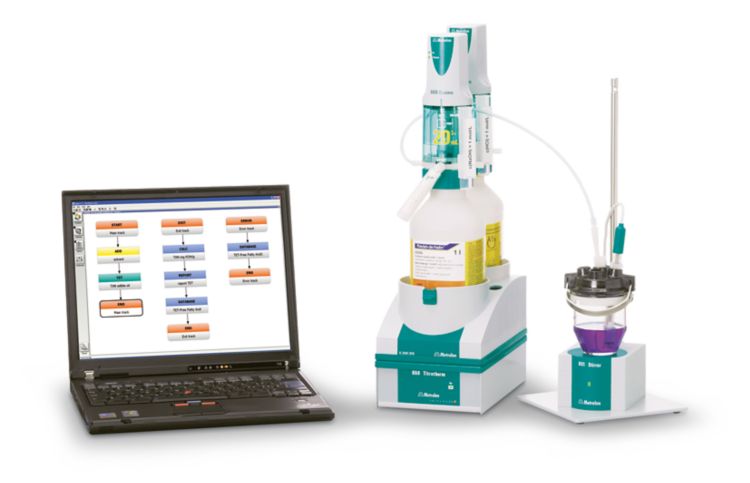A thermometric complexometric titration procedure has been adapted to the determination of aluminum in solutions, where the direct titration with fluoride is not practicable because of the interference of silica (e.g., from digestion of clays, zeolites, or other alumino-silicate-containing substances).
The new method involves the use of a thermometric indicator (hydrogen peroxide) to give a sharp temperature change at the endpoint. When all the excess EDTA has reacted with the copper(II) titrant, the first trace of free Cu2+ ions causes the H2O2 to decompose very rapidly, causing a sudden increase in the temperature of the solution. The heat of reaction ΔHf for H2O2 → H2O + [O] is approximately -98 kJ/mol, or twice the heat created during the reaction of a strong acid with a strong base. This makes the technique very robust.
Additionally thermometric titrations have very short titration durations as the titrant is added continuously while monitoring the temperature. Results are usually obtained within 2–3 minutes.
Aluminum sulfate and potassium alum salts are used as samples. To an Erlenmeyer flask containing the aluminum salts, EDTA solution in excess and ammonia solution is added. Then the obtained solution is stirred for five minutes while boiling to facilitate the complexation reaction between aluminum and EDTA.

After allowing to cool down to room temperature, an aliquot of the solution is used for titration. Ammonia buffer and hydrogen peroxide are added subsequently. The excess of EDTA is back titrated with Cu2+ solution.
The thermometric titration is carried out automatically with the tiamoTM software in combination with an 859 Titrotherm and a Thermoprobe.
The analysis of aluminum is very reproducible. Relative standard deviations < 0.3% are obtained with this method.
| Assay Al in Al2(SO4)3 · 16 H2O / % | Assay Al in AlK(SO4)2 · 12 H2O / % | |
|---|---|---|
| n | 8 | 10 |
| Mean | 7.87 | 5.11 |
| SD(abs) | 0.02 | 0.01 |
| SD(rel) | 0.25 | 0.20 |
This application shows a fast alternative method to the potentiometric titration of aluminum which also can be used in the presence of silicates.
Thermometric titration is a very fast and maintenance-free technique, which leads to reliable and precise results. The addition of peroxide enhances the reaction enthalpy therefore additionally increases the reproducibility.
Internal reference: AW TI CH1-1305-042020
 Share via email
Share via email
 Download PDF
Download PDF